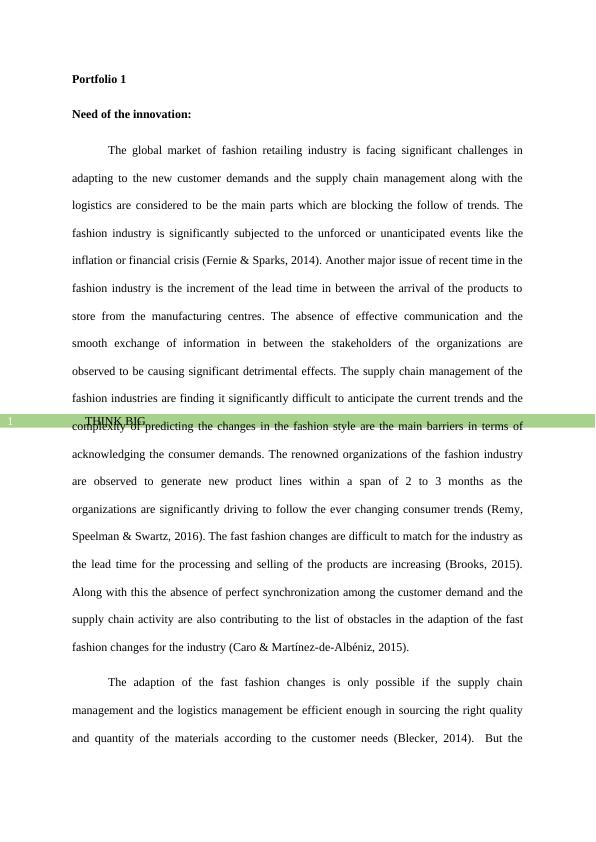Fashion Retailing Industry: Challenges and Opportunities
8 Pages1951 Words267 Views
Added on 2021-06-18
About This Document
The supply chain management of the fashion industries are finding it significantly difficult to anticipate the current trends and the complexity of predicting the changes in the fashion style are the main barriers in terms of acknowledging the consumer demands. The renowned organizations of the fashion industry are observed to generate new product lines within a span of 2 to 3 months as the organizations are significantly driving to follow the ever changing consumer trends (Remy, Speelman & Swartz, 2016).
Fashion Retailing Industry: Challenges and Opportunities
Added on 2021-06-18
ShareRelated Documents
End of preview
Want to access all the pages? Upload your documents or become a member.
Innovative Supply Chain Management
|14
|1170
|77
Supply Chain Management and Design
|8
|1582
|355
Logistics and Supply Chain Management- Doc
|16
|4212
|18
Role of Internet of Things and Robotics in Supply Chain Management
|11
|3661
|241
Logistics Management Strategy for Successful Business
|15
|3609
|144
Supply Chain Management
|8
|1919
|57



